Evaluating Authenticity in Pearls: A Comprehensive Guide
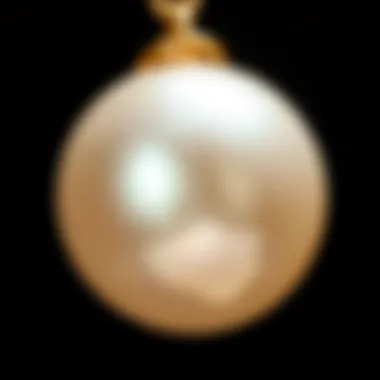
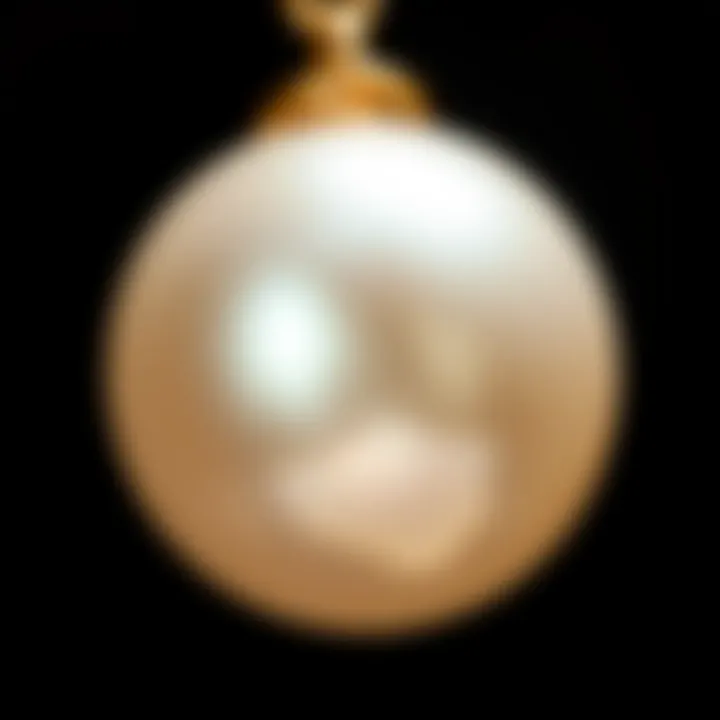
Intro
Pearls, often referred to as nature's delicate gems, offer a unique allure that makes them a favorite among jewelry enthusiasts and collectors alike. Distinguishing between real pearls and imitations can be an intricate dance, as the market brims with both quality and counterfeit options. This guide comprehensively tackles the challenging task of identifying authentic pearls, shedding light on their fascinating characteristics and subtle nuances. As we dive into this exploration, the goal is to equip readers with knowledge about pearls’ rich history, formation methods, and properties that set them apart.
The world of pearls is not just about beauty; it encompasses both natural and cultured varieties. It’s critical for potential buyers and avid collectors to understand these distinctions to make educated decisions. Whether you’re seeking pearls for personal adornment or for investment, having a keen eye for authenticity can save both time and money.
This examination will enlighten gem enthusiasts and those with a burgeoning interest in pearls about the elemental properties that define real pearls. We will also explore various methods for evaluation, taking you on a journey from the ocean depths where these gems are formed to the bustling marketplaces where they are sold.
By understanding the intricacies of authenticity, you will enhance your ability to assess pearl quality effectively. Gear up for a dive into this shimmering realm, and prepare to elevate your knowledge of one of nature's most exquisite treasures.
Intro to Pearls and Their Value
Understanding pearls is not just a matter of jewelry appreciation; it's a deep dive into the intersection of nature, culture, and history. The value of pearls goes well beyond their lustrous beauty. For gemstone enthusiasts, collectors, and jewelry designers, the significance of recognizing the authenticity of pearls can’t be overstated. In an era where counterfeit products abound, the ability to distinguish genuine pearls enhances not only investment value but also aesthetic satisfaction.
The journey of pearls from ocean to adornments encapsulates a blend of natural wonder and human craftsmanship. Authentic pearls signify a commitment to quality; they encompass rich histories and reveal cultural stories that many imitations lack. Their worth is closely tied to the processes involved in their formation—nacre layers taking years, sometimes decades to create, thus imparting a fleeting aura of rarity.
From a monetary perspective, genuine pearls command higher prices, reflecting the extensive efforts in cultivation and harvesting. Moreover, the best pearls can even appreciate over time, turning a simple piece of jewelry into a legacy. Investing in an authentic pearl isn't merely about the immediate purchase; it's a step into a broader narrative of elegance and prestige. This section will set the foundation for understanding what makes pearls valuable, peeling back layers that reveal their historical and cultural importance.
Historical Significance of Pearls
Throughout history, pearls have held a position of esteem that is almost unmatched in the world of gems. The use of pearls dates back thousands of years; they have been found in ancient Egyptian tombs as well as worn by royalty in the East and West alike. Ancient Romans cherished pearls, with the wealthy often going to great lengths to acquire them, believing they signified wealth and power. In essence, pearls were often the crown jewels of their time.
Some archaeological findings indicate that pearls were used as currency in certain parts of the globe, showcasing their value both material and symbolic. In different cultures, they serve as symbols of purity and wisdom, bearing witness to their enduring appeal across ancient civilizations and up to the modern day.
Cultural Representations of Pearls
Culturally, pearls appear in literature, art, and folklore worldwide. In the East, they are often linked with femininity and the softer aspects of life, while in the West, they represent sophistication and timeless elegance. For example, in Japan, the pearl is celebrated in festivals, recognized for its beauty and as a symbol of good fortune.
The metaphorical weight of pearls extends to various literary works as well, often depicting them as symbols of unattainable beauty or the fragility of life. This unique blend of history and cultural relevance underlines the importance of authentic pearls, which carry with them deeper meanings often lost in imitations.
Understanding the Composition of Pearls
When it comes to appreciating pearls, knowing how they are made can be quite enlightening. The composition of pearls is key to understanding their authenticity and value. Unlike many gemstones that are mined from the earth, pearls are organic in nature, created by living mollusks. This organic process gives them unique characteristics that set them apart.
Understanding the composition helps potential buyers or collectors make informed decisions. An informed collector can recognize not just the visual beauty, but also the geological and biological narratives behind each pearl. By grasping these foundational aspects, one can better appreciate why some pearls fetch higher prices or possess certain traits that signify quality.
Nacre: The Building Block of Pearls
At the heart of every pearl lies nacre, often referred to as mother-of-pearl. This substance is produced by the mollusk as a defense mechanism against irritants. When an irritant enters the shell, the mollusk secretes layers of nacre around it, gradually forming a pearl.
The quality and thickness of these nacre layers dramatically affect the pearl's luster and overall appeal. Real pearls have a depth of luster that reflects their layers, which is difficult to replicate. Unlike imitation pearls, which may have a shiny surface but lack depth, real nacre gives pearls that exquisite glow.
The grain of nacre can also provide clues about authenticity. Real pearls are typically softer than their synthetic counterparts. A simple scratch test can show this difference; a real pearl will be more susceptible to scratching than an imitation. Remember though, preservation of value comes not just from authenticity but also from care.
Types of Pearls: Natural vs. Cultured
Distinguishing between natural and cultured pearls can be a veritable maze. Natural pearls form spontaneously in the wild without human intervention. Their rarity makes them highly desirable, but this also means they can be very expensive. On the other hand, cultured pearls are formed under human oversight, where irritants are intentionally introduced into the mollusk to trigger nacre production.
Both types have unique merits. Natural pearls boast a unique charm of unpredictability and are often considered treasures of the sea. However, cultured pearls are more widely available, which can make them a more affordable option for many collectors. Prices vary widely based on their type, size, and quality. So, knowing which type you’re dealing with is crucial for a buyer’s strategy.


Common Imitations: Understanding What You Might Find
In today’s market, buyers face a growing challenge of counterfeits and synthetic imitations. Common types include plastic beads, glass pearls, and synthetic pearls made from materials like silicone. These imitations often imitate the look of real pearls but fail to replicate the depth, warmth, and feel.
It’s essential to remain vigilant. One should look for discrepancies in appearance, such as an overly smooth texture or a lack of inclusions that indicate a natural formation process. Furthermore, reputable vendors should provide certifications or details about the provenance of the pearls they offer.
By familiarizing oneself with these common imitations, collectors can avoid costly mistakes and enhance their acquisitions with confidence.
"Knowing the composition of pearls not only enriches your collection but also empowers you as a buyer."
Physical Characteristics of Real Pearls
Understanding the physical characteristics of real pearls is at the core of identifying their authenticity. Pearls are not just valued for their aesthetics; their inherent properties tell a compelling story about their formation and quality. This section delves into three definitive factors: luster, shape, and weight. Each of these elements contributes to the overall appraisal of a pearl, enabling connoisseurs and collectors to make informed choices.
Luster and Surface Texture
The luster of a pearl, often termed its brilliance, is one of the most crucial aspects when determining its genuineness. Real pearls typically exhibit a soft glow that’s almost ethereal, contrasting sharply with the artificial shine of imitations. This depth of luster arises from the layers of nacre that compose the pearl itself. When light encounters a real pearl, it interacts with the material's layers, creating a gentle yet captivating sheen that defines its elegance.
Real pearls might display slight imperfections in their surface, which can add to their charm and are sometimes referred to as orient. It’s important to examine the pearl closely, ideally under varying lighting conditions, as each angle can reveal different facets of its surface. Genuine pearls are often not flawlessly smooth; minor blemishes or slight irregularities highlight their natural formation process. On the contrary, faux pearls may appear unnaturally glossy and smooth, which can be a red flag.
"When assessing a pearl, pay close attention to its luster; an iridescent glow is often the first sign of authenticity."
Shape Variations and Their Implications
The shape of pearls can vary widely, and this variation carries significant implications for their value and authenticity. Round pearls are the most sought after due to their symmetry; they mirror perfection and are often associated with high-quality standards. However, it’s crucial to recognize that not all pearls are perfectly round.
In fact, many real pearls come in bars, ovals, and even unique shapes known as baroque pearls. While round pearls command higher prices, irregular shapes can tell a fascinating story about their organic growth. Collectors may in fact prize these unique forms for their individuality.
When evaluating a pearl's shape, remember that imperfections are often an indicator of natural origins. Perfectly shaped pearls are sometimes manufactured. Observing the symmetry and overall shape can provide insights into both the pearl's origin and its potential value.
Weight: How Density Affects Perception
The weight of a pearl can often serve as a tangible indicator of its makeup. Real pearls generally have a density that is distinguishable from their imitation counterparts. A genuine pearl tends to feel heavier than a plastic imitation of the same size, as real pearls are composed of multiple aragonite layers and have a solid structure.
When handling pearls, if one feels unusually light, it could signal that it’s not genuine. The sensation should be more substantial, consistent, yet delicate, a reminder of its organic origin. Weight tests can be particularly useful when combined with other examinations, providing another layer for evaluating authenticity.
Techniques for Testing Pearl Authenticity
Determining whether a pearl is genuine or just a clever imitation requires a keen eye and knowledge of various examination methods. This section will shed light on techniques you can use to identify the authenticity of pearls effectively. Knowing how to distinguish real pearls from counterfeits is invaluable for collectors and jewelry designers alike. Let's dive into some straightforward yet effective methods to evaluate pearl integrity.
The Tooth Test: A Simple Method
One of the most accessible methods for testing the authenticity of a pearl is the tooth test. This technique revolves around the texture of the pearl in relation to your teeth. Genuine pearls, being composed of layers of nacre, typically have a slightly gritty feel when you drag them against your teeth. Here’s how to conduct this test:
- Select a Pearl: Ensure that the pearl is clean and free from distractions like setting or dust.
- Gently Bite: Take the pearl between your front teeth and apply light pressure. Don’t bite too hard; you don’t want to risk damaging a real pearl.
- Observe the Feel:
- If the pearl feels smooth, it's likely a fake, often made of glass or plastic.
- A gritty texture suggests that the pearl is genuine.
While this test is effective, it’s not foolproof. Some high-quality imitations might still pass this test, so it should be one part of a larger evaluation strategy.
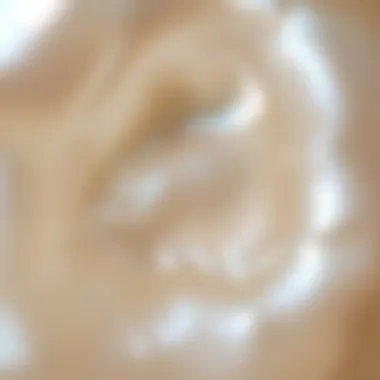
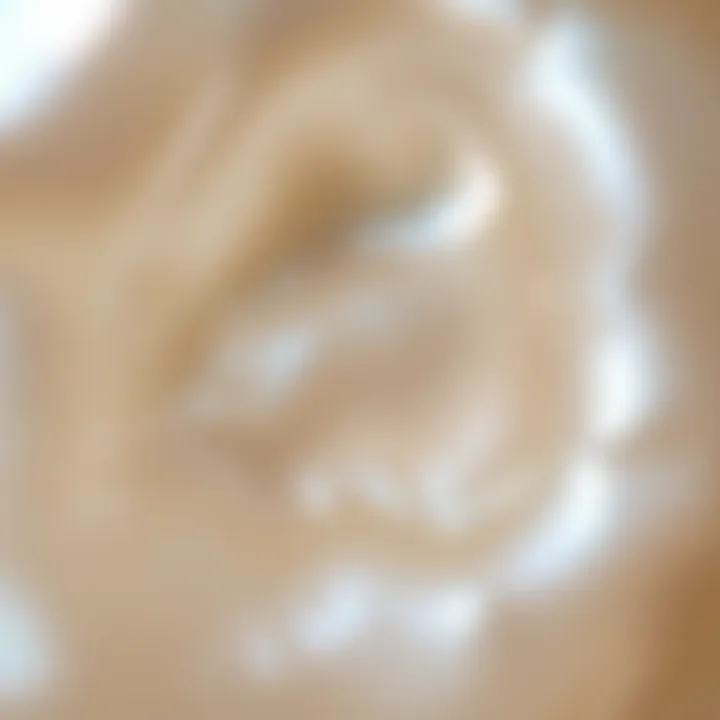
Light Reflection Testing
Light can reveal much about a pearl's authenticity. Real pearls exhibit unique characteristics in terms of light reflection. This technique is about observing how light interacts with the surface of a pearl.
- Find a Bright Light Source: Natural daylight is best, but any strong white light works.
- Observe Under Different Angles: Rotate the pearl under the light source. Take note of the following:
- Check for Consistency: Real pearls have varying degrees of light reflection throughout their surface, while imitations often look uniform and too perfect.
- Luster: Real pearls tend to have a soft glow and depth in their luster, appearing iridescent with subtle hues.
- Surface Flaws: Look for differences in light reflection; authentic pearls may display slight imperfections due to their natural development over time.
This technique requires a practiced eye and patience, ensuring that you properly assess each angle and nuance of the pearl.
Professional Appraisal and Certification
When in doubt, consulting with professionals who hold expertise in pearls can save you time and heartache. Professional appraisers offer a level of assurance that independent tests may not. Here are a few key aspects to consider when pursuing this avenue:
- Choose Reputable Appraisers: Look for gemologists or certification labs that are recognized in the field. The International Gemological Institute (IGI) and Gemological Institute of America (GIA) are two prominent organizations that provide reputable certification.
- Understand Appraisal Scope: A professional appraisal typically includes detailed analysis of:
- Ensure Certification: When you receive an appraisal, ask for certification documents. These should include photographs and specific details about the pearl’s authenticity as well as grading information.
- The pearl's type (natural or cultured)
- Its overall quality such as luster, shape, surface texture, and color
- Market value
Important Note: Investing in professional appraisal may seem costly, but the peace of mind it offers when purchasing high-value pearls is priceless.
Through these techniques, you equip yourself with tools to differentiate between real and imitation pearls effectively. The tooth test provides a quick check, light reflection testing uncovers deeper visual characteristics, and professional appraisal ensures expert validation, giving you confidence in your pearl purchases.
The Role of Origin in Pearl Value
Understanding the origin of pearls is essential for appreciating their value, quality, and authenticity. Different regions produce unique types of pearls, and this geographical distinction plays a crucial role in how these gems are perceived in the market. The influence of origin goes beyond just the locale; it encompasses the environmental conditions, tradition, and methods of cultivation that shape each pearl's characteristics.
When a pearl is sourced from a notable area such as the South Sea or Tahitian islands, it often commands a higher price due to the reputation of that region for producing exceptional pearls. The nuances of each geographic source lead to variations in size, luster, and color, contributing to the pearl’s rarity and desirability. For collectors and gem enthusiasts, these distinctions are not just trivial facts; they are essential in assessing the worth of a pearl, as each facet of origin adds layers to its story and value.
Moreover, understanding the origin can guide customers toward ethically sourced pearls. Awareness of where pearls come from encourages informed purchasing decisions, fostering a market that values sustainability and ethical practices. Recognizing the importance of origin ultimately helps ensure that consumers are not just acquiring a beautiful item but investing in a piece that upholds certain standards of quality and ethics.
Geographic Sources and Their Distinctions
Different regions are renowned for specific types of pearls, each associated with particular attributes. For instance, South Sea pearls are famous for their large size and creamy luster, usually found in shades of white to golden. In contrast, Tahitian pearls offer a rich palette of colors, including vibrant greens and blues, thanks to their origin in darker waters. This striking diversity exemplifies why understanding the source of a pearl is equally significant as examining its physical characteristics.
The Akoya pearls of Japan, known for their classic round shapes and sharp luster, stand in contrast to the more casually shaped freshwater pearls cultivated in lakes and rivers across China. It’s the variety from each geographic source that enriches the pearl market, allowing consumers and collectors to choose based on personal preference and investment potential.
When evaluating pearls, being aware of these geographic distinctions helps in recognizing not only genuine materials but also potential fakes. Counterfeit pearls often aim to mimic the characteristics of these valuable breeds but lack the authenticity that comes from true geographic origins.
The Impact of Harvesting Techniques
Harvesting techniques play a pivotal role in the overall quality and price of pearls. For instance, the method used to cultivate Tahitian pearls vastly differs from that applied to South Sea pearls. Traditional or sustainable harvesting practices gently extract pearls without damaging the oysters or the environment. In contrast, mass harvesting methods may prioritize quantity over quality, often resulting in lesser-grade pearls that flood the market but fail to meet the standards of true collectors and enthusiasts.
Additionally, the method of harvesting affects the growth cycle of the pearls. When oysters are nurtured in optimal conditions, they produce pearls that reflect better luster and strength. Unfortunately, not all farms abide by the same ethical standards, making it essential for buyers to be aware of harvesting techniques associated with the pearls they are considering. A pearl's origin story is incomplete without understanding the practices involved in bringing it to market.
In summary, the role of origin in the value of pearls cannot be overstated. Being knowledgeable about geographic sources, the finer details of cultivation, and the implications of harvesting techniques enriches one's understanding of pearls, enabling more informed choices in the jewelry marketplace. For enthusiasts and collectors, this knowledge translates into a robust appreciation for these jewels of the sea, ensuring that each purchase represents more than just a decorative item—but a treasure steeped in history and value.
"The pearl is a symbol of purity and high status, often reflecting the environment from which it hails."
For further exploration on pearl origins, check out this resource.
Whether you are a seasoned gem hunter or just beginning your journey, clarity on these topics will enhance your pearl literacy and appreciation.
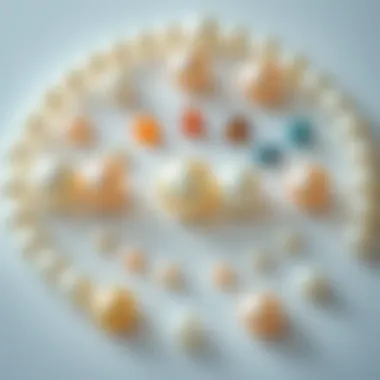
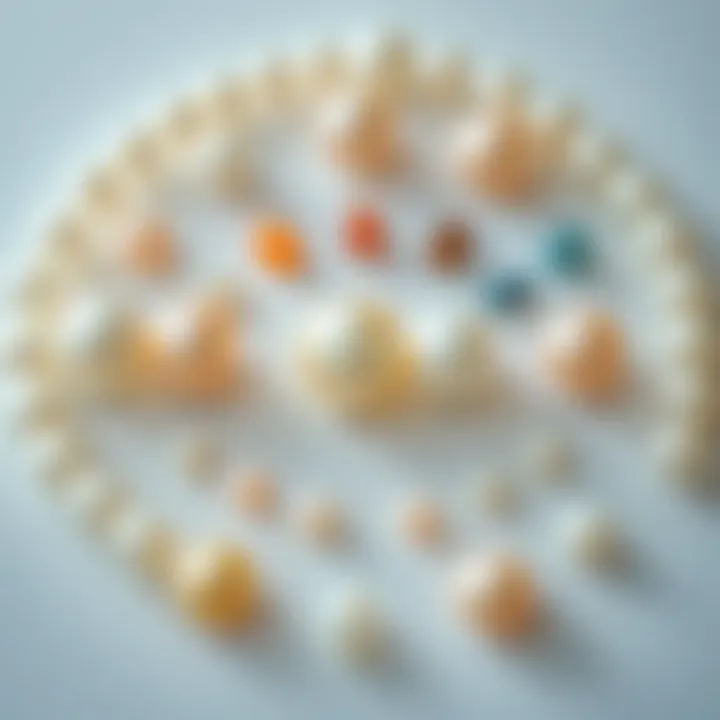
Market Trends and Authenticity Challenges
The realm of pearls is not just about aesthetic appeal; it also navigates the complex world of market trends and authenticity challenges that significantly influence consumer decisions and perceptions. With a rise in the popularity of pearls, especially among millennials and Gen Z, understanding market trends becomes imperative. These demographics are not only driving demand but also seeking unique, authentic products, making it essential for buyers to differentiate between genuine pearls and their imitations.
One factor amplifying the value of pearls today is their increasing cultural significance. Social media platforms such as Instagram and Pinterest showcase exquisite pearl jewelry, thus fuelling a surge in interest and desire for these gems. This has opened the floodgates for both innovative pearl designs and counterfeit products, leading us to the urgent need for awareness and knowledge surrounding authenticity challenges.
The growing trend of wearing pearls as staples in fashion has pushed consumers to look for varieties that reflect personal style rather than just tradition. This shift includes a broader acceptance of mixed materials in jewelry, leading some manufacturers to produce pieces that blur the lines between real and imitation pearls.
"In a market flooded with choices, discerning the genuine from the faux not only safeguards investments but also celebrates personal taste, a reflection of one's identity."
The Surge in Demand for Pearls
As more fashion icons and celebrities embrace pearls, a palpable surge in demand has set the market abuzz. Pearls are increasingly being marketed as versatile pieces suitable for various occasions—from casual wear to high-end events. This resurgence can be associated with the cyclical nature of fashion trends and a renewed appreciation for timeless jewelry.
However, this heightened interest has birthed challenges. The insatiable demand for pearls has spurred producers, particularly in the cultured pearl segment, to ramp up cultivation speed. While this may meet market needs, it sometimes compromises quality and authenticity. Additionally, it’s been noted that the surge in demand has led to a parallel rise in counterfeit pearls.
Counterfeit Pearls: The Growing Problem
Counterfeit pearls are swiftly becoming a significant issue faced by consumers. Imitation pearls today often boast an appearance that can rival their authentic counterparts. These faux gems are produced from materials that simulate the look of real pearls but lack their intrinsic qualities and appeal.
The problem becomes even more intricate as online shopping gains traction. Consumers often rely on images when purchasing pearls, making it easier for misrepresentations to slip through the cracks. Social media platforms have become breeding grounds for misleading marketing, where counterfeit pearls are advertised as genuine, leaving buyers unaware until it’s often too late.
Consumer Awareness and Education
To tackle these authentication issues, consumer awareness and education play a crucial role. Knowledge is power, especially in a marketplace rife with deceptive practices. Understanding the characteristics of genuine pearls—such as their unique luster, organic shape, and the feel of the surface—can significantly aid in identifying real from fake.
Organizations dedicated to pearl appraisal, like the Gemological Institute of America, offer workshops and resources that empower consumers to recognize and appreciate quality pearls. Moreover, social media channels can serve as platforms for education, where gem enthusiasts share tips, tricks, and firsthand experiences—an example of a community coming together to promote informed purchases.
Increasing consumer awareness not only contributes to the demand for genuine pearls but also fosters an appreciation for the craftsmanship behind each piece. When buyers invest time in learning about pearls, they enhance their own shopping experience while simultaneously advocating for ethical practices within the industry.
In summary, the intertwining of market trends and the challenges of authenticity creates an intricate landscape for pearl enthusiasts and collectors. As the demand escalates, the importance of vigilance and education cannot be overstated. As consumers, becoming informed can indeed steer the market toward enhancing quality and ethical practices.
The End: Enhancing Pearl Literacy
In the intricate realm of pearls, understanding authenticity isn't just a luxury; it’s a necessity. This conclusion pulls everything together, highlighting the importance of enhancing your literacy about pearls. With an emphasis on quality and authenticity, consumers and collectors alike benefit from a well-informed perspective.
Understanding what is real in the world of pearls directly translates into making better purchasing decisions. Recapping the key strategies discussed earlier serves to reinforce the knowledge that authenticity lies in the finer details—texture, luster, and weight are pivotal indicators. This knowledge arms consumers against the proliferation of counterfeits and helps in appreciating the true value of pearls.
Additionally, staying abreast of ongoing educational resources—whether through workshops, expert guidance, or literature—opens doors to deeper insights into this fascinating topic. The pearl industry continuously evolves, and so do the methods of assessing quality. Consequently, the notion of honing your understanding on this subject isn’t just about a one-time learning; it’s an ongoing journey.
To encapsulate what this article has aimed to convey:
“Knowledge is power, but applied knowledge is true authority.”
The continuous pursuit of knowledge can bolster one’s expertise in discerning authenticity. Each pearl possesses a story—its origin, composition, and craftsmanship—and these stories add to the allure and value of each piece you encounter.
Ultimately, enhancing pearl literacy not only enriches your understanding but also elevates your experience as a collector or enthusiast. When you recognize the beauty and significance behind each pearl, you engage in a deeper appreciation that transcends mere aesthetics, cultivating a genuine passion for these oceanic gems.
Recap of Key Identification Strategies
- Luster: Look for that unmistakable glow which real pearls possess. Imitations will often appear overly shiny or dull.
- Texture: A tactile examination reveals subtle irregularities in real pearls, whereas fakes have a seamless finish.
- Weight: Owning a real pearl often involves heft, due to its density. Most imitations will feel lighter.
- Testing methods: Utilize techniques like the tooth test and professional appraisals to confirm authenticity.
The Importance of Ongoing Education
Staying in the know about pearls can facilitate awareness about market shifts and new imitation techniques. Resources like
- The Gemological Institute of America
- Pearl Knowledge
- National Jeweler can serve as platforms to expand your knowledge and keep your skills sharp. The pearl industry is vast, and thus, a willingness to learn and adapt is essential. Ultimately, education translates to not just an expert eye but a deep-seated connection to the craft.







